
by Greg Custer
Last updated: 7:00 AM ET, Sat November 9, 2024
Can a destination’s golden age be recaptured by experiencing remnants of its romantic past?
Are there places where nostalgia’s echo enhances a sense of place?
Rio de Janeiro offers a teasing journey to a time of national optimism and international acclaim for South American giant, Brazil. In six years (1958-64) Brazil won two World Cup titles, built and inaugurated a strikingly modernistic frontier capital city (Brasilia), launched “50 years of progress in five” and invented a musical genre some of us still can’t shake.
During this short mid-century window of time, all things felt good in Brazil, and in no place better than Rio.
Today, physical structures like hotels, nightclubs, theatres and stadiums have become living embodiments of a lost era. Preserving and revisiting these spaces can re-animate their memories. Rio de Janeiro, famous for its beaches, is hallowed ground for appreciating and reliving a particular bygone age when Rio burst into our 20th-century collective consciousness through our ears.
Rio has been called “Paris by the Sea” and the “Cidade Maravilhosa” by Brazilian lyricists. The city is the birthplace of Bossa Nova.
Invented at beach bars, apartment gatherings, and small clubs (some of which still honor the genre), the music that “rises from our heart up to our eyes” was a melding of Afro-Brazilian samba (also invented in Rio), West Coast Jazz, beautiful melodies, and optimism. Conjuring images of the tropical sun, sea, beach, love and a certain “girl from Ipanema,” landmark albums blending jazz with Brazilian melodies swept into our parent’s vinyl collections.
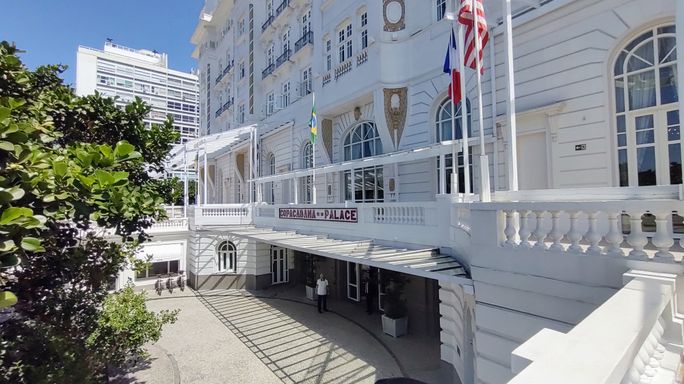
Entrance to Copacabana Palace. (Photo Credit: Greg Custer)
This uniquely Rio musical wave that swept the world is lovingly embraced at Rio’s Belmond Copacabana Palace Hotel, the epicenter of Brazil’s 20th-century golden age. Constructed in 1923 on what was a deserted Copacabana Beach, the Belmond Copacabana was built by French architect Joseph Gire, who was inspired by the grand hotels of the French Riviera. He delivered a stately white Art Deco masterpiece.
The Palace has been a centerpiece for Rio’s social and cultural life for over 100 years, hosting heads of state and celebrities; it became synonymous with glamour and luxury.
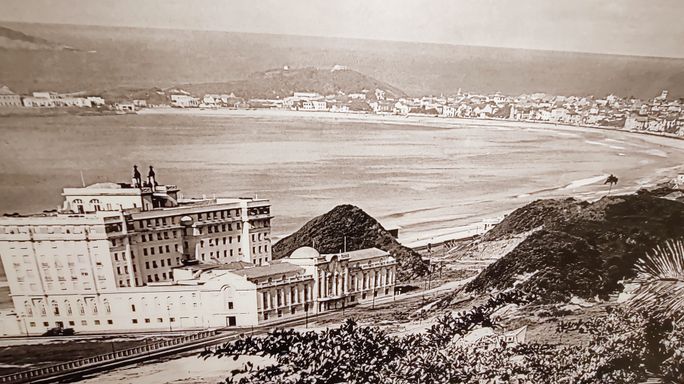
Copacabana Palace photographed in the 1920s (Photo Credit: Greg Custer)
The Palace’s Golden Room was a venue for artists like Edith Piaf, Ella Fitzgerald, Frank Sinatra and early Bossa Nova stars. Today, a third-floor photo gallery commemorates in luminous black and white the Palace’s renowned guests and performers (Orson Welles, Nat King Cole, Janice Joplin, Walt Disney, Rod Stewart, Princess Di, Paul McCartney, Madonna, and many others).
The faint strains of Bossa Nova pioneer performances are easy to imagine.
The Copacabana Palace today is meticulously restored and aims to please luxury-seeking guests wanting an ideal location (the center of Copacabana Beach), award-winning dining (two Michelin star options–Mee, serving pan-Asian and Northern Italian Cipriani with two elegant tasting menus), and a glamorous pool, in a place witness to a century of Brazilian history.
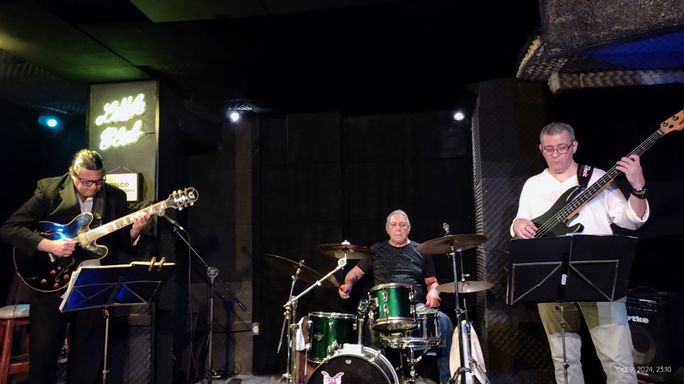
Beco das Garrafas performers. (Photo Credit: Greg Custer)
It’s just a block away to explore the spiritual home of the Bossa Nova and Brazilian Jazz movements. Beco das Garrafas (a short dead end, “Alley of the Bottles”) and its two surviving micro night clubs, celebrate in faded glory these early venues where the iconic beat (that “grabs you like a boa”) emerged.
The Alley was abandoned for some 40 years before a comeback in 2014. A $12 cover charge to hear nightly trios playing Bossa Nova and Brazilian Jazz seems a pittance compared to the venue’s true musical stature.
Another Copacabana venue recapturing Rio’s golden age has opened as the Roxy Dinner Show.
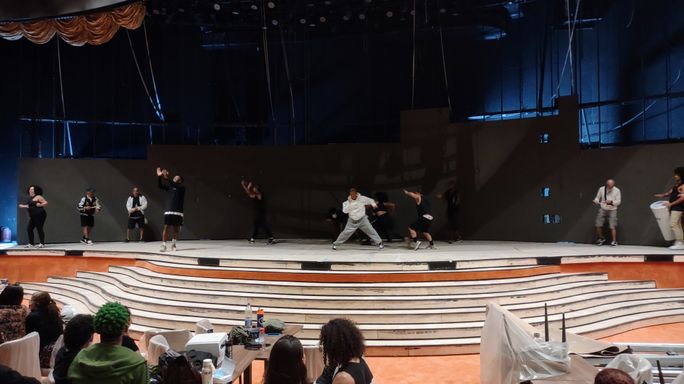
Roxy Dinner Show rehearsal. (Photo Credit: Greg Custer)
Debuting in October 2024, Copacabana’s most popular movie house (Cine Roxy) is now an inspired floorshow appreciation of Brazilian music, dance, and cultural diversity. Originally opened in 1938 and shuttered in 2021, the Cine Roxy’s 2024 revival illuminates the enduring memory of Rio’s glittering past.
A dance of another style altogether is central to Rio’s most celebrated sports venue, Maracanã Stadium.
Here, the Brazilian futbol soul has experienced euphoric highs and staggering lows. While neither of Brazil’s golden age World Cup championships were won on this pitch, the Stadium has seen the national team heartbreakingly defeated here (twice) in World Cup finals.
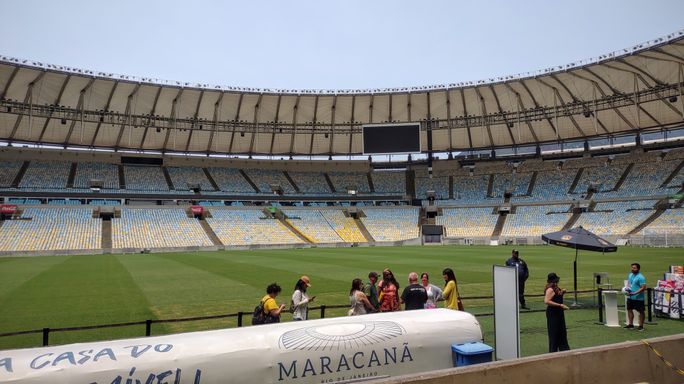
Maracana Stadium. (Photo Credit: Greg Custer)
A tour of the site is filled with memorabilia for any soccer aficionado. The chance to enter the field and sit on the players' bench (the Stadium offers tours when club matches are not in season) brings home the emotional tug on the Brazilian zeitgeist.
The happy times came to a sudden stop in 1964 when the military took power and tanks overtook Rio streets. For the next 21 years, Rio lost its innocence and the cultural festa was over. Many of Bossa Nova’s early stars fled Rio and moved abroad to continue their musical careers (Joao Gilberto, Antonio Carlos “Tom” Jobim, Sergio Mendes and others). But the longing and remembrance are still here.
Rio is a place that still embodies the uniquely Brazilian emotional concept of saudade, a deep emotional state of melancholic longing or yearning. It’s your companion across Rio’s visually stunning urban, coastal and forested backdrops, draped in a bittersweet mix of happiness and craving.
There’s even a holiday in Brazil (January 30) to reflect on the pain of loss and the hope of return.
For the latest travel news, updates and deals, subscribe to the daily TravelPulse newsletter.
Topics From This Article to Explore